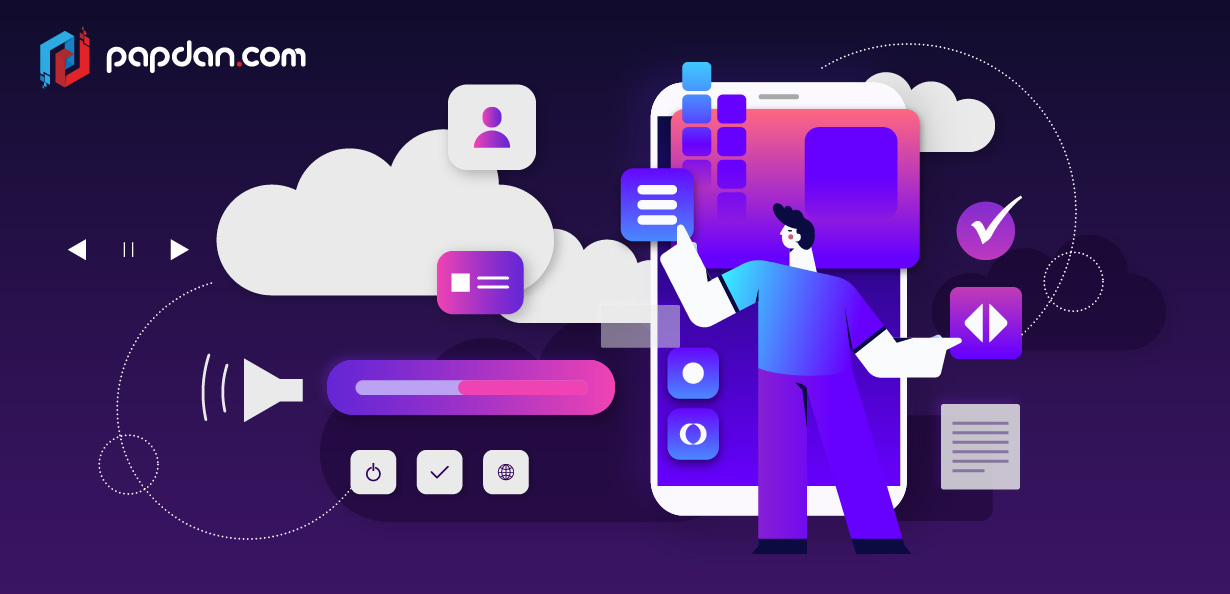Despite the fact that there are more than five million mobile applications accessible, the need for new ones is continuously growing due to rapid technological advancements and people’s desire for more inventive techniques.
Without a question, our culture is growing increasingly reliant on mobile devices and, by consequence, mobile apps. And technological advancements allow not only for the development of new solutions, but also for the improvement of current ones.
In fact, apps account for about 90% of all time spent on mobile devices nowadays, owing to the pandemic and all of the time spent at home.
But this isn’t a new trend; smartphone applications have been popular for some years. However, technology advances at a breakneck pace every year, resulting in the emergence of new and more difficult mobile trends.
Keeping up with the newest mobile app development trends may therefore assist you in developing a successful app, attracting users, and encouraging them to use it on a regular basis. More significantly, you’ll be able to create new solutions based on your consumers’ problems and better meet their demands.
In this article, we’ll give you a rundown of the most popular mobile app development trends for 2022, so a Melbourne web developer like you can get started on the right foot.
Let’s dive in!
Blockchain
This technology has gone a long way and is currently used in a variety of fields and sectors, with revenues approaching $20 billion and consistent growth. In mobile app development, blockchain will be utilized for decentralized apps and wallets to track and convert currency. Blockchain as a service (BaaS) will eventually provide safe tools and software for managing payments, preventing fraud, and conducting elections.
5G
The next generation of mobile connection, known as 5G, is on its way. It will transform mobile applications and app development in ways we never imagined. The Fourth Industrial Revolution is believed to be ushered in by 5G, but what does this imply for mobile apps?
It all comes down to 5G’s interconnectedness and speed. The latency of 5G is less than one millisecond, unlike its predecessor. When compared to human reaction times of up to 300 milliseconds, 5G appears to be practically instantaneous. Furthermore, the Internet of Things (IoT), augmented reality (AR) and virtual reality (VR), linked driverless vehicles, wireless health, and other industries will benefit from 5G’s combination of extremely low latency, high bandwidth, and connection density. Next-generation applications will take advantage of this power and speed to do feats previously unimaginable.
Increased speed and decreased latency will also help to minimize energy usage in the short term. Furthermore, because of 5G’s greater radio frequency and shorter wavelengths, mobile apps will be able to do more accurate geotargeting and geofencing.
Beacon Technology
Beacon technology is already used in a variety of businesses, including healthcare, eCommerce, museums, and hotels. Despite the fact that it was first released in 2013, it has just lately gained popularity. The online and real worlds may be linked in a unique way using this technology.
Beacons, for example, can help you better understand your consumers’ behavior by evaluating how they engage with your mobile apps in your physical businesses. Beacons for mobile payments, AI-enabled chips, and AI and ML tools will be among the beacon technology developments.
Beacons communicate with other smart devices using low-energy Bluetooth technology. A retail beacon, to be more specific, connects to a customer’s phone through Bluetooth and provides deals and promotions. The consumer will be provided with a wealth of information regarding items and sales in the area.
You may also use beacons to track a customer’s behavior and see whether they spend a lot of time on a specific category or service. However, proximity is the most important benefit of beacon technology.
Instant Apps and Progressive Web Apps (PWAs)
Instant applications that may be tried without having to download them are the latest breakthrough in the mobile app industry. It’s typical to download an app, test it, and then remove it because it didn’t match your expectations. Everything is now more straightforward. Users can test and use the software via a web link rather than downloading it.
PWAs, which benefit from the ability to be available and dependable on any platform, are the next big thing in mobile app development, and they’ll eventually supplant native applications and websites.
Mobile Commerce (M-Commerce)
E-commerce and mobile commerce are frequently confused. E-commerce, on the other hand, refers to the selling or purchase of products and services through the internet. M-commerce, or mobile commerce, on the other hand, is only an extension of e-commerce. Simply said, the transaction now takes place online, but especially through a mobile device.
For the previous three years, m-commerce has been a rapidly increasing trend, and it will continue to be so in 2022. While COVID promoted mobile commerce, an increasing number of users have accepted it, indicating that the trend of shopping on mobile devices will continue.
If you still aren’t convinced, mobile commerce is expected to reach $22 billion by 2022, demonstrating a stable pace of development. And, as this trend continues to spread, mobile app developers are under increased pressure to create better-performing apps, including native m-commerce apps.
Mobile Apps in the Future
With new technology and techniques, mobile applications will continue to revolutionize the corporate environment and user experience. With convenient online payments, games, and communication, mobile applications have become our greatest friends, and we have become reliant on their capabilities.
Metaverses, virtual worlds, and smart robots, as well as wholly innovative, mind-blowing technology we’ve never seen before, will all be part of the market by the end of 2022. But one thing is certain: the world will never be the same again.

